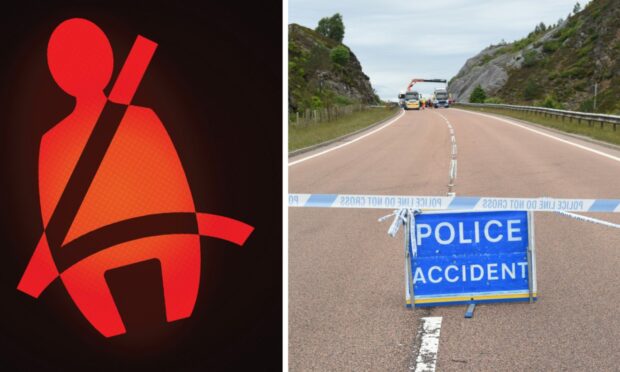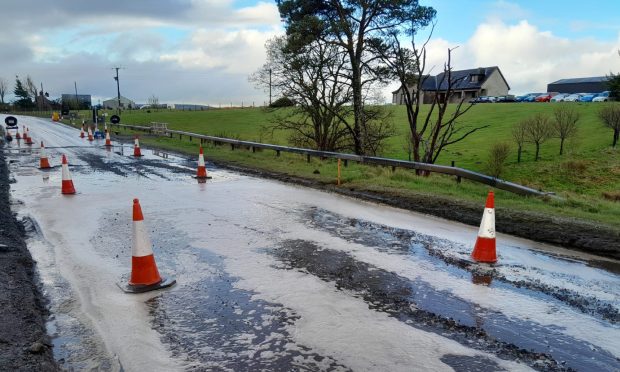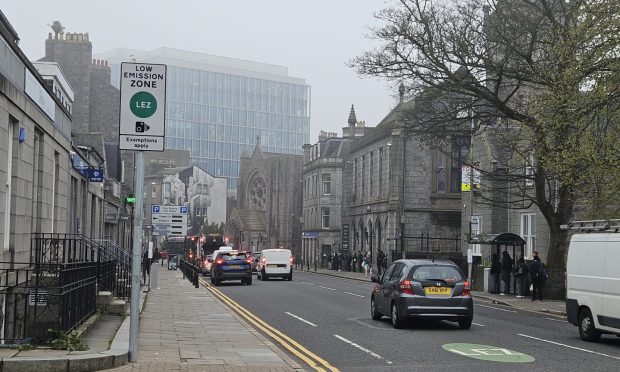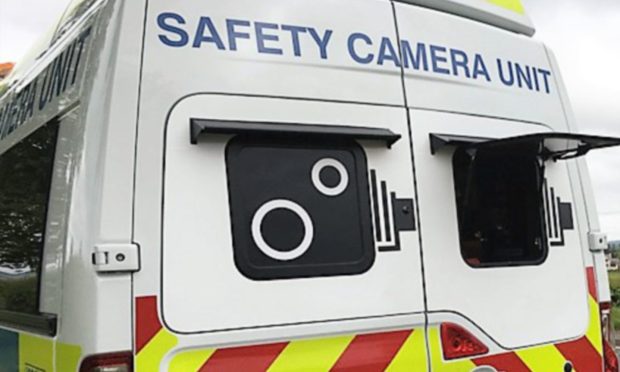One in ten people killed on Highland roads in the last three years was not wearing a seatbelt.
Despite being compulsory, some drivers still fail to belt up which is costing lives in some cases.
It is one of the ‘Fatal Five’ contributory factors in the causes of death in road crashes being highlighted in safety campaigns to mark the seventh UN Global Road Safety Week from May 15-21.
There were 36 road deaths in the Highlands and Islands in the last year, including multiple-fatality accidents.
No excuse for not wearing a seatbelt
Sgt David Miller, of the Highland and Islands road policing unit, said 10% of people who died in road accidents in the Highlands since 2020 were not wearing seatbelts.
“It’s a surprising figure. You think the technology is there to save people and should be used, but folk still don’t wear a seatbelt.
“I don’t understand it. There is never really any reasonable excuse for people not to wear them.”
The safety campaigns will also highlight other causes of fatal accidents including careless and dangerous driving, using mobile phones and other driver distractions, speeding, and drink/drug driving.
“In the majority of crashes we go to the fatal five are contributing factors, and sometime there is a mix of a few of them”, said Sgt Miller.
Scotland’s road safety framework to 2030, published by Transport Scotland, says between 2015-2019, 16% of in-car fatalities in Scotland were not wearing seatbelts.
It has set interim targets by 2030 to halve the number of people killed or injured on roads and reduce the number of children killed by 60%.
An ambitious long-term goal is that no one is seriously injured or killed on the roads by 2050.
A Parliamentary Advisory Council for Transport Safety (PACTS) report says seatbelt wearing reduces both fatal and non-fatal injuries by 60% among front-seat passengers, and by 44% among rear-seat passengers.
Seatbelt-wearing by rear-seat passengers also halves the fatality risk for belted front-seat occupants.
What are the rules?
Rule 99 of the Highway Code says adults, and children aged 14 and over, must use a seatbelt or child restraint, where fitted.
In addition, Rule 100 states the driver must ensure all children under 14 wear seatbelts or use an approved child restraint.
If a child is under 1.35m (about 4ft 5in) a suitable baby, child or booster seat must be used.
You can be fined up to £500 if you don’t wear a seat belt.
Transport Scotland says while seatbelt laws are a reserved matter, it works to raise awareness on seatbelt wearing and the use of appropriate child restraints.
A seatbelt marketing campaign ran in February and there are plans to run further campaigns.
A spokesman said: “The Scottish Government is committed to making Scotland’s roads safe for all, and all motorists have a part to play in keeping our roads safe by driving responsibly and within the law.”
Child car seat specialist, Good Egg Safety, has found during community checking events the suitability of child car seats or restraints were inappropriate in 57% of cases.
The charity says in the three years before the pandemic, major errors and those where seats and restraints were incompatible with the car or child accounted for around 30% of errors found.
They now account for 67% of errors identified.
These include harnesses being loose, twisted or the incorrect height, incorrect belt routing and the wrong use of tethers.
Related –
Shock rise in north east drivers without seatbelts and using phones
Are you interested in more exclusive and breaking Highland and Islands news from the P&J? If so, why not join our dedicated Facebook page HERE













Conversation